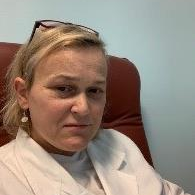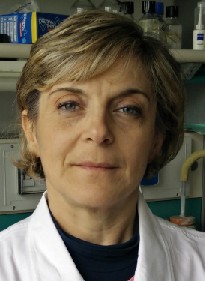Studying at the University of Verona
Here you can find information on the organisational aspects of the Programme, lecture timetables, learning activities and useful contact details for your time at the University, from enrolment to graduation.
Academic calendar
The academic calendar shows the deadlines and scheduled events that are relevant to students, teaching and technical-administrative staff of the University. Public holidays and University closures are also indicated. The academic year normally begins on 1 October each year and ends on 30 September of the following year.
Course calendar
The Academic Calendar sets out the degree programme lecture and exam timetables, as well as the relevant university closure dates..
| Period | From | To |
|---|---|---|
| FISIO ROV 1^ ANNO - 1^ SEMESTRE | Oct 8, 2018 | Dec 14, 2018 |
| FISIO ROV 3^ ANNO - 1^ SEMESTRE | Oct 8, 2018 | Nov 23, 2018 |
| FISIO ROV 2^ ANNO - 1^ SEMESTRE | Oct 8, 2018 | Nov 30, 2018 |
| FISIO ROV 1^ ANNO - 2^ SEMESTRE | Feb 4, 2019 | Apr 30, 2019 |
| FISIO ROV 3^ ANNO - 2^ SEMESTRE | Feb 11, 2019 | Mar 15, 2019 |
| FISIO ROV 2^ ANNO - 2^ SEMESTRE | Apr 1, 2019 | May 24, 2019 |
| Session | From | To |
|---|---|---|
| FISIO ROV SESSIONE INVERNALE 2 ANNO | Dec 10, 2018 | Jan 18, 2019 |
| FISIO ROV SESSIONE INVERNALE 1 ANNO | Jan 7, 2019 | Feb 1, 2019 |
| FISIO ROV SESSIONE INVERNALE 3 ANNO | Jan 14, 2019 | Feb 8, 2019 |
| FISIO ROV SESSIONE ESTIVA 2 ANNO (1 periodo) | Jun 3, 2019 | Jun 14, 2019 |
| FISIO ROV SESSIONE ESTIVA 3 ANNO | Jun 24, 2019 | Jul 19, 2019 |
| FISIO ROV SESSIONE ESTIVA 1 ANNO | Jul 8, 2019 | Jul 30, 2019 |
| FISIO ROV SESSIONE ESTIVA 2 ANNO (2 periodo) | Jul 15, 2019 | Jul 30, 2019 |
| FISIO ROV SESSIONE AUTUNNALE | Sep 2, 2019 | Sep 27, 2019 |
| Session | From | To |
|---|---|---|
| FISIO ROV SESSIONE AUTUNNALE | Nov 1, 2019 | Nov 30, 2019 |
| FISIO ROV SESSIONE PRIMAVERILE | Mar 1, 2020 | Mar 31, 2020 |
| Period | From | To |
|---|---|---|
| Festa di Ognissanti | Nov 1, 2018 | Nov 1, 2018 |
| Festa dell’Immacolata | Dec 8, 2018 | Dec 8, 2018 |
| VACANZE DI NATALE | Dec 24, 2018 | Jan 6, 2019 |
| VACANZE DI PASQUA | Apr 19, 2019 | Apr 28, 2019 |
| Festa della liberazione | Apr 25, 2019 | Apr 25, 2019 |
| Festa del lavoro | May 1, 2019 | May 1, 2019 |
| Festa della Repubblica | Jun 2, 2019 | Jun 2, 2019 |
| Vacanze estive | Aug 5, 2019 | Aug 18, 2019 |
| Festa S. Patrono | Aug 5, 2019 | Aug 5, 2019 |
| Description | Period | From | To |
|---|---|---|---|
| FISIO ROV 3^ ANNO - 1^ SEMESTRE (1 periodo) | FISIO ROV 3^ ANNO - 1^ SEMESTRE (1 periodo) | Nov 26, 2018 | Dec 21, 2018 |
| FISIO ROV 2^ ANNO - 1^ SEMESTRE (1 periodo) | FISIO ROV 2^ ANNO - 1^ SEMESTRE (1 periodo) | Jan 21, 2019 | Feb 22, 2019 |
| FISIO ROV 2^ ANNO - 1^ SEMESTRE (2 periodo) | FISIO ROV 2^ ANNO - 1^ SEMESTRE (2 periodo) | Mar 4, 2019 | Mar 29, 2019 |
| FISIO ROV 3^ ANNO - 1^ SEMESTRE (2 periodo) | FISIO ROV 3^ ANNO - 1^ SEMESTRE (2 periodo) | Mar 18, 2019 | Apr 18, 2019 |
| FISIO ROV 1^ ANNO - 1^ SEMESTRE | FISIO ROV 1^ ANNO - 1^ SEMESTRE | May 2, 2019 | May 30, 2019 |
| FISIO ROV 3^ ANNO - 2^ SEMESTRE (1 periodo) | FISIO ROV 3^ ANNO - 2^ SEMESTRE (1 periodo) | May 13, 2019 | Jun 14, 2019 |
| FISIO ROV 1^ ANNO - 2^ SEMESTRE | FISIO ROV 1^ ANNO - 2^ SEMESTRE | Jun 10, 2019 | Jul 5, 2019 |
| FISIO ROV 2^ ANNO - 2^ SEMESTRE | FISIO ROV 2^ ANNO - 2^ SEMESTRE | Jun 17, 2019 | Jul 12, 2019 |
| FISIO ROV 3^ ANNO - 2^ SEMESTRE (2 periodo) | FISIO ROV 3^ ANNO - 2^ SEMESTRE (2 periodo) | Sep 2, 2019 | Oct 4, 2019 |
Exam calendar
Exam dates and rounds are managed by the relevant Medicine Teaching and Student Services Unit.
To view all the exam sessions available, please use the Exam dashboard on ESSE3.
If you forgot your login details or have problems logging in, please contact the relevant IT HelpDesk, or check the login details recovery web page.
Should you have any doubts or questions, please check the Enrollment FAQs
Academic staff
 elena.bravi@apss.tn.it
elena.bravi@apss.tn.it
 manuela.cappuccini@apss.tn.it
manuela.cappuccini@apss.tn.it
 cembrani@apss.tn.it
cembrani@apss.tn.it
 0461 515402
0461 515402
 quagliadiego@gmail.com
quagliadiego@gmail.com
 roberta.zanoni@univr.it
roberta.zanoni@univr.it
Study Plan
The Study Plan includes all modules, teaching and learning activities that each student will need to undertake during their time at the University.
Please select your Study Plan based on your enrollment year.
1° Year
| Modules | Credits | TAF | SSD |
|---|
2° Year activated in the A.Y. 2019/2020
| Modules | Credits | TAF | SSD |
|---|
3° Year activated in the A.Y. 2020/2021
| Modules | Credits | TAF | SSD |
|---|
| Modules | Credits | TAF | SSD |
|---|
| Modules | Credits | TAF | SSD |
|---|
| Modules | Credits | TAF | SSD |
|---|
Legend | Type of training activity (TTA)
TAF (Type of Educational Activity) All courses and activities are classified into different types of educational activities, indicated by a letter.
FUNDAMENTALS OF MEDICAL CLINIC IN PHYSIOTHERAPY (2019/2020)
Teaching code
4S007272
Credits
5
Coordinator
Language
Italian
Also offered in courses:
- Foundations and methods of treatment in psychiatry - FARMACOLOGIA GENERALE of the course Bachelor's degree in Psychiatric Rehabilitation Techniques
The teaching is organized as follows:
Learning outcomes
Fornire conoscenze di base riguardanti la farmacologia, patologia generale, microbiologia, medicina interna e terapia medica di interesse fisioterapico.
MODULO: FARMACOLOGIA Comprendere le azioni dei farmaci sui processi fisiopatologici dei pazienti con particolare riferimento ai farmaci usati nelle aree principali di intervento del fisioterapista.
MODULO: PATOLOGIA GENERALE Acquisire gli strumenti concettuali e scientifici per spiegare le cause e i meccanismi delle malattie umane. Conoscere i principali fattori patogeni, i principi generali dei disordini dell’omeodinamica dei sistemi complessi, le reazioni al danno biologico con particolare riferimento all’infiammazione, ai processi di guarigione o di cronicizzazione.
MODULO: MICROBIOLOGIA Acquisire le informazioni essenziali sui processi infettivi sostenuti da virus e batteri, sulle modalità di crescita e di diffusione di questi microrganismi e sulle misure preventive.
MODULO: MEDICINA INTERNA E TERAPIA MEDICA Inquadrare le patologie internistiche sapendone individuare i principali aspetti clinici e riconoscerne le possibili complicanze di interesse per il fisioterapista. Individuare le terapie farmacologiche più frequenti conoscendo le principali indicazioni e gli effetti collaterali. Conoscere le principali tecniche e procedure riabilitative relative alle principali disabilità viscerali.
Program
------------------------
MM: MEDICINA INTERNA E TERAPIA MEDICA
------------------------
- Epidemiology of cardiovascular diseases - Definition of global cardiovascular risk - Overview of physiopathology of atherosclerosis - Arterial hypertension: definition, classification, associated organ damage - Metabolic syndrome: epidemiology, definition, importance as a cardiovascular risk factor - Hypercholesterolemia and hypertriglyceridemia: definition and importance as a cardiovascular risk factor - Type 2 diabetes mellitus: epidemiology, definition, importance as a cardiovascular risk factor
------------------------
MM: FARMACOLOGIA
------------------------
Analysis of drug/receptor interaction and the generation of drug effect(s). Terminology related to drug use, the methodologies of drug identification and clinical development. Adverse reactions: classification and reporting Analysis of the pharmacokinteic properties of drugs applied to patient treatment with detailed knowledge and understanding of : 1- drug absorption with emphasis on differences between routes of administration;2- drug distribution and elimination; 3- drug metabolism ; 4- quantitative approach to pharmacokinetics and the definition of a therapeutic regimen Mechanims of action, classification, therapeutic effects and adverse reactions and clinical uses of antiinflammatory drugs Mechanims of action of drugs active on the neuromuscular system
------------------------
MM: MICROBIOLOGIA
------------------------
Aims of microbiology. Classification of microorganisms in the world of the living. Structure and characteristics of fungi and protozoa. The architecture of the bacterial cell: differences between gram positive and gram negative bacteria. Pathogenicity and virulence of the bacteria. Bacteria pathogens conventional and opportunists bacteria Mechanisms of pathogenic bacteria: exotoxins and endotoxin bacterial Bacteria of clinical interest: streptococci, staphylococci, enterobacteri, neisserie. Batteria anaerobe obligate and spore-forming (clostridia) Virus: architecture, classification and mechanisms of replication. Mechanisms of pathogenic viruses. infections localized, generalized, silent, persistent, slow, latent. The Herpesviruses: HSV-1/2, VZV, EBV, CMV. The Retrovirus: HIV1 and 2 Virus causes of hepatitis: HAV, HBV, HCV, HDV. Polioviruses General characteristics of antimicrobial drugs.
------------------------
MM: PATOLOGIA GENERALE
------------------------
I. Introduction: - general concepts - the pathological process as an alteration of homeostasis - adaptation, compensation and responsiveness - pathogenesis - etiology II. Cellular Pathology: -cell death: necrosis and apoptosis - pathogenetic processes implicated in cellular damage III. Natural immunity and acquired immunity: - innate immune cells - adaptive immune cells IV. Tissue responses to cell damage: - acute inflammation: changes in flow and vascular permeability; - inflammatory exudates (types, composition, localization); - mechanisms controlling phagocyte migration to the inflammatory sites - effector functions of phagocytes: oxygen-dependent and oxygen-independent bactericidal mechanisms, phagocytosis V. Mediators of acute inflammation: plasma-derived mediators and cell-derived mediators - coagulation system, complement system, vasoactive amines - cytokines VI. Evolution of the acute inflammatory response: -tissue repair, regeneration and fibrosis -chronic inflammation: chronic systemic diseases that affect the joints and connective tissues VII. Neoplasms
Bibliography
| Author | Title | Publishing house | Year | ISBN | Notes |
|---|---|---|---|---|---|
| Pontieri G.M. | Elementi di Patologia generale | Piccin | 2018 | ||
| Clementi Fumagalli | Farmacologia Generale e Molecolare (Edizione 5) | Edra | 2018 | 978-88-214-4436-4 | |
| A. Conforti, L. Cuzzolin, R. Leone, U. Moretti, G. Pignataro, M. Taglialatela, M. Vanzetta | Farmacologia per le professioni sanitarie (Edizione 1) | Idelson-Gnocchi | 2015 | 978-88-7947-592-1 | |
| Cevenini R., Sembri V. | Microbiologia e Microbiologia Clinica | Piccin Editore, Padova | 2004 | ||
| Emanuel Rubin, Howard M. Reisner | Patologia Generale. L'essenziale | Piccin | 2015 | 978-88-299-2740-1 | |
| Pontieri G.M. | Elementi di Patologia generale | Piccin | 2018 |
Examination Methods
------------------------
MM: MEDICINA INTERNA E TERAPIA MEDICA
------------------------
Written text followed by oral examination
------------------------
MM: FARMACOLOGIA
------------------------
Written exam with multiple choice questions
------------------------
MM: MICROBIOLOGIA
------------------------
Writing test: 10 multiple choice questions
------------------------
MM: PATOLOGIA GENERALE
------------------------
The assignment of General Pathology consists of a written test with 21 multiple choice questions. The evaluation criteria are the following: 1,5 points for correct answers; 0,75 points for partially correct answers; 0 points for missing/wrong answers. The exam in considered valid when the student achieves a minimal overall grade of 18 points.
Career prospects
Module/Programme news
News for students
There you will find information, resources and services useful during your time at the University (Student’s exam record, your study plan on ESSE3, Distance Learning courses, university email account, office forms, administrative procedures, etc.). You can log into MyUnivr with your GIA login details: only in this way will you be able to receive notification of all the notices from your teachers and your secretariat via email and soon also via the Univr app.
Graduation
Documents
| Title | Info File |
|---|---|
|
|
pdf, it, 367 KB, 19/02/24 |
|
|
pdf, it, 142 KB, 19/01/24 |
|
|
pdf, it, 862 KB, 19/01/24 |
|
|
pdf, it, 273 KB, 25/03/24 |
Gestione carriere
Orario lezioni
Documents
| Title | Info File |
|---|---|
|
|
pdf, it, 525 KB, 22/09/23 |
|
|
pdf, it, 39 KB, 17/04/24 |
|
|
pdf, it, 33 KB, 17/04/24 |
|
|
pdf, it, 1453 KB, 07/02/24 |
Student login and resources
Attività Seminariali/a scelta dello studente
Attività Seminariali/a scelta dello studente



















